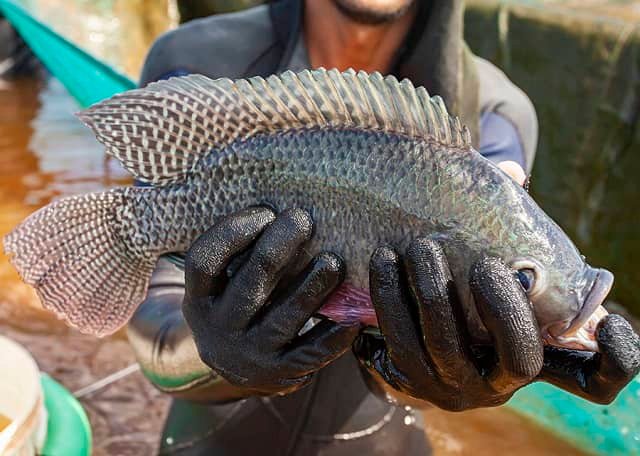
One of the main concerns of the human population is reducing aging. In this context, people have started to include the consumption of collagen with the aim of achieving beauty and health by delaying aging.
Fish skin has become an important source of collagen because it has advantages such as easy access, less contamination, lower risk of disease transmission, no religious barriers, and high collagen production.
Thus, researchers from Weifang Medical University and Yantai Yuhuangding Hospital studied the potential mechanism and delaying effect of tilapia skin collagen on skin aging in mice.
Tilapia skin as a source of collagen
Tilapia is one of the most important aquaculture species in terms of production. However, during the processing for fillet extraction, tilapia skin is often considered as a waste.
However, in recent years, there has been growing interest in utilizing tilapia skin to produce collagen.
Aging model
The researchers used Kunming mice divided into groups: aging model, normal group, positive control group (vitamin E), and low, medium, and high-dose tilapia skin collagen groups (2.0, 4.0, 8.0 mg/g).
“The normal group was only injected with saline solution on the back and neck. The other groups were subcutaneously injected with 5% D-galactose and ultraviolet light together to establish the aging model,” they reported.
Prevention of aging
Collagen fibers are the main component of the dermis and represent 95% to 98% of the total fiber mass.
According to the researchers, changes in the dermis structure are the main causes of skin aging, such as the decrease in collagen fibers and thinning of the dermis.
“The results showed that tilapia skin collagen could improve the content and distribution of collagen fibers in the dermis of aging mice and delay skin aging in mice,” the researchers report.
“Compared to the normal group, the skin of mice in the aging model group was thinner, looser, and had reduced skin moisture content, Hyp content, and SOD activity.”
They also highlighted that for mice in the low, medium, and high-dose tilapia skin collagen groups, the dermis thickness increased, exhibiting a close arrangement, and skin moisture content, Hyp content, and SOD activity were significantly regulated, effectively alleviating the skin aging process.
“The dose of tilapia skin collagen was directly proportional to the anti-aging effect,” they emphasized.
How does fish skin collagen work?
According to the study, “Collagen hydrolysates from tilapia skin, such as small molecule oligopeptides, are rich in hydrophobic amino acids, which can be used as raw materials to participate in collagen synthesis and inhibit its degradation, stimulate fibroblast proliferation and migration, promote hyaluronic acid synthesis, and enhance the activity of antioxidant enzymes to alleviate skin oxidative stress, thus achieving the effect of delaying aging.”
“Tilapia skin collagen exhibits good bioactivity, biocompatibility, and permeability, which allows us to explore its application in external beauty products,” they concluded.
Conclusions
“Tilapia collagen can alter the thickness of the epidermis and dermis, significantly increase the skin moisture content in aging mice, improve Hyp content and SOD activity in aging mice,” the researchers concluded.
They further emphasize that the skin aging process in mice was effectively alleviated, and the aging symptoms in mice improved significantly.
Contact
Yan Qu, PhD
Department of Dermatology, Yantai Yuhuangding Hospital
Yantai, Shandong 264000
China.
Email: wfmcqy@163.com
Reference (open access)
Pu, X, Qu, Y. A study on the delayed effect of tilapia skin collagen on skin aging for mice and its possible mechanism. J Cosmet Dermatol. 2023; 00: 1- 9. doi:10.1111/jocd.15835
Editor at the digital magazine AquaHoy. He holds a degree in Aquaculture Biology from the National University of Santa (UNS) and a Master’s degree in Science and Innovation Management from the Polytechnic University of Valencia, with postgraduate diplomas in Business Innovation and Innovation Management. He possesses extensive experience in the aquaculture and fisheries sector, having led the Fisheries Innovation Unit of the National Program for Innovation in Fisheries and Aquaculture (PNIPA). He has served as a senior consultant in technology watch, an innovation project formulator and advisor, and a lecturer at UNS. He is a member of the Peruvian College of Biologists and was recognized by the World Aquaculture Society (WAS) in 2016 for his contribution to aquaculture.
